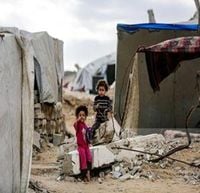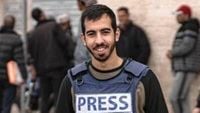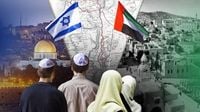In the days following the much-heralded ceasefire in Gaza, the situation on the ground remains fraught with tragedy, uncertainty, and diplomatic wrangling, as the latest figures and developments reveal both the human cost and the fragile state of peace in the region.
According to Al Jazeera, hospitals across Gaza received the bodies of 124 people within the most recent 24-hour reporting period ending October 12, 2025. Of these, 117 were recovered from beneath the rubble of collapsed buildings—a grim testament to the scale of destruction. The Gaza Health Ministry also reported 33 injuries over the same period, bringing the official death toll since the war began on October 7, 2023, to a staggering 67,806. The number of wounded has climbed to 170,066, while thousands remain missing and are presumed buried under the debris of their former homes.
These numbers, though already overwhelming, may not capture the full extent of the devastation. Independent estimates cited by TRT World and Antiwar.com suggest the real toll could be higher, as deaths from starvation, disease, and the ongoing siege are not included in the official count. Gaza’s Civil Defense has confirmed that more than 9,500 people remain unaccounted for, likely trapped or killed under the ruins.
The ceasefire, ratified on October 10, 2025, was supposed to bring relief. Instead, it’s been marred by continued violence and violations. On the evening of October 12, Israeli occupation forces shot and killed an unarmed Palestinian civilian in the Ma’an area east of Khan Younis, southern Gaza, as reported by IMEMC News and Middle East Eye. Medical sources confirmed the victim had been inspecting property damaged in earlier bombardments. Witnesses described sustained gunfire and ongoing shelling, which not only breached the ceasefire but also obstructed rescue efforts—ambulance crews were unable to reach the wounded due to destroyed roads and continued attacks.
Gaza’s Health Ministry has also confirmed that at least 2,615 Palestinians have been killed while trying to access humanitarian aid since May 2025, with more than 19,177 wounded in such incidents. These deaths often occurred near distribution sites run by the U.S.- and Israeli-backed Gaza Humanitarian Foundation, sometimes under live fire. According to Wikipedia’s documentation of the 2025 Gaza Strip aid distribution killings, these tragedies underscore the persistent dangers faced by civilians, even in moments meant for relief.
The ceasefire agreement itself is based on a 20-point framework proposed by U.S. President Donald Trump. As outlined by the Council on Foreign Relations and confirmed by Al Jazeera, the plan includes provisions for a comprehensive hostage-prisoner exchange, the withdrawal of Israeli forces, and the unrestricted entry of humanitarian aid. Yet, despite the ink barely being dry, violations have already prompted condemnation from mediators and international observers. There is a growing sense among diplomats that the continued breaches could undermine the truce and delay desperately needed recovery efforts.
Internationally, the ceasefire has generated both hope and skepticism. Ukrainian President Volodymyr Zelenskyy, speaking on Fox News, expressed optimism that the Israel-Hamas ceasefire could serve as a model for ending the war between Ukraine and Russia. "This is real success," Zelenskyy said. "It gives signals for us and hope that with such pressure, what president Trump used in the Middle East to make peace, and I hope that he will use the same instruments, even more, to pressure Putin to stop his war in Ukraine." Ukraine has been embroiled in conflict with Russia for over 1,300 days since the invasion began in February 2022, and the search for a diplomatic breakthrough remains urgent.
In Israel, the military leadership has framed recent events as a strategic victory. Israeli army chief Lt Gen Eyal Zamir stated in a televised address, "The military pressure we applied over the past two years, together with complementary diplomatic measures, constitute a victory over Hamas." He added, "We will continue to act in order to shape a security reality that ensures the Gaza Strip no longer poses a threat to the State of Israel and its civilians ... Through our operations, we are reshaping the Middle East and our security strategy for the years ahead."
Meanwhile, the United Nations peacekeeping mission in Lebanon reported another alarming incident: a peacekeeper was lightly wounded by an Israeli grenade dropped near a UNIFIL position in southern Lebanon. This was the second such attack by the Israel Defense Forces in October, violating UN Security Council resolution 1701. "This is the second IDF grenade attack on peacekeepers this month. It represents another serious violation of resolution 1701 and concerning disregard for the safety of peacekeepers," the UNIFIL statement read. The UN called on Israel to cease attacks near peacekeeping forces, emphasizing their role in restoring stability along the Israel-Lebanon border.
Back in Israel, political tensions are running high. Prime Minister Benjamin Netanyahu faced a hostile crowd at a rally in Tel Aviv’s Hostages Square, where his name was met with loud boos. Spokesperson Shosh Bedrosian defended Netanyahu’s actions, stating, "Prime Minister Netanyahu took risks, and those risks led us to this point." She emphasized his cooperation with President Trump and commitment to the release of hostages, which is the first phase of the peace plan.
The Palestinian Authority has signaled a willingness to engage with the Trump administration and former British Prime Minister Tony Blair to consolidate the ceasefire and begin rebuilding Gaza. Senior Palestinian official Hussein al-Sheikh stated on X, "We have confirmed our readiness to work with President Trump, Mr Blair and the partners to consolidate the ceasefire, the entry of aid, the release of hostages and prisoners, and then start with the recovery and reconstruction." Trump’s plan envisions Gaza being governed by a technocratic committee under international supervision, but only after Hamas relinquishes control and the Palestinian Authority implements reforms. Netanyahu, however, has rejected the prospect of the Palestinian Authority running Gaza, highlighting a major sticking point in the post-war roadmap.
In parallel, negotiations for a hostage-prisoner exchange remain tense. According to AFP, Hamas is insisting that seven senior Palestinian leaders be included in the final list for release, most notably Marwan Barghouti and Ahmad Saadat. Netanyahu’s office has already confirmed it will not release Barghouti, who is serving multiple life sentences, raising questions about whether this demand could derail the delicate process.
Amid the diplomatic maneuvering, the human stories continue to unfold. Manar al-Houbi, a Gaza PhD student awarded a scholarship to the University of Glasgow, shared her heartbreak after her family was denied entry to the UK under new immigration restrictions. Her research aims to explore how media and education can combat violence against women and promote peace—an aspiration that feels especially poignant given the current context.
As Vice President JD Vance told CBS’s Face the Nation, "We are now on the cusp of a sustainable peace in the Middle East." He confirmed that President Trump would travel to the region to meet Israeli hostages released under the peace agreement, but cautioned that the next phase—disarmament and the establishment of new governance in Gaza—would require "consistent leverage and consistent pressure." The U.S. and its allies are preparing to play a mediation role, with Vance predicting that Arab and Muslim-majority countries will contribute troops to stabilize Gaza and support reconstruction efforts.
For now, Gaza remains a place where hope and hardship coexist uneasily. The world watches as leaders grapple with the complexities of peace, while ordinary people continue to search for loved ones, rebuild shattered homes, and cling to the prospect of a better future.



